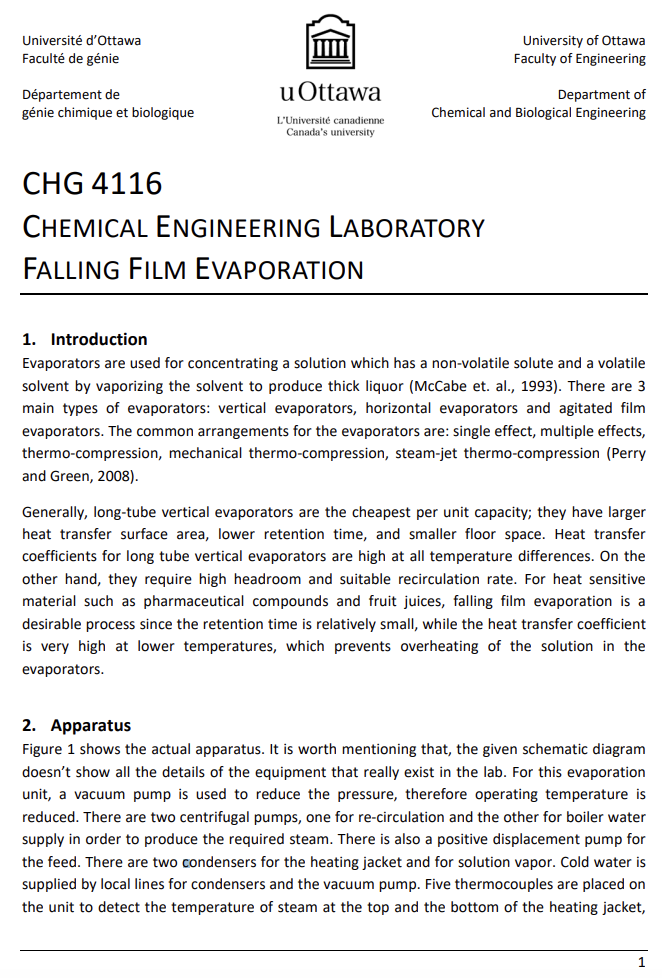Falling Film Experiment in Chemical Engineering Lab (CHG 4116)
Summary:
This Falling Film Experiment in Chemical Engineering Lab (CHG 4116) document introduces falling film evaporation in chemical engineering. It explains the purpose of evaporators and the different types available. The focus is on falling film evaporation, particularly suitable for heat-sensitive materials. The apparatus used in the experiment includes pumps, condensers, thermocouples, and pressure gauges. The limitations of the system are also outlined. The document concludes with a list of references for further reading on the topic.
Excerpt:
Falling Film Experiment in Chemical Engineering Lab (CHG 4116)
CHG 4116
CHEMICAL ENGINEERING LABORATORY
FALLING FILM EVAPORATION
1. Introduction
Evaporators are used for concentrating a solution with a non‐volatile solute and a volatile solvent by vaporizing the solvent to produce thick liquor (McCabe et al., 1993). There are 3 main evaporators vertical, horizontal, and agitated film evaporators. The common arrangements for the evaporators are single effect, multiple effects, thermo‐compression, mechanical thermo‐compression, steam‐jet thermo‐compression (Perry
and Green, 2008).
Generally, long‐tube vertical evaporators are the cheapest per unit capacity; they have larger heat transfer surface area, lower retention time, and smaller floor space. Heat transfer coefficients for long tube vertical evaporators are high at all temperature differences. Conversely, they require high headroom and a suitable recirculation rate. For heat-sensitive materials such as pharmaceutical compounds and fruit juices, falling film evaporation is a desirable process since the retention time is relatively small, during the heat transfer coefficient
is very high at lower temperatures, which prevents overheating of the solution in the evaporators
2. Apparatus
Figure 1 shows the actual apparatus. It is worth mentioning that, the given schematic diagram
doesn’t show all the equipment details in the lab. A vacuum pump is used to reduce the pressure for this evaporation unit. Therefore operating temperature is reduced. There are two centrifugal pumps, one for re‐circulation and the other for boiler water supply to produce the required steam. There is also a positive displacement pump for the feed. There are two condensers for the heating jacket and solution vapour. Cold water is supplied by local lines for condensers and the vacuum pump.


Reviews